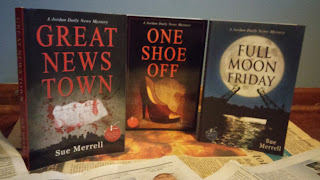Every now and then society goes on a book-banning binge.
From Virginia to Washington State, Covid-weary conservatives are suddenly noticing books that have been on the school’s library shelves and required reading lists for years. They are offended by language, racial issues, LGBTQ characters and anything else that might upset their kids (who are too busy with violent video games and explicit television shows to notice.)
The effect of all this book-banning is the same as always: sales are skyrocketing.
Consider “Maus,” Art Spiegelman’s graphic novel about the Holocaust in which Jews are drawn as mice and the Nazis as cats. The work earned a Pulitzer Prize in 1992, but in 30 years its popularity has dimmed a little. No edition of the books was in Amazon’s top 1,000 a week ago. But after the book was banned by a Seattle-area school board, two editions jumped into the top 20 and one edition is sold out.
Demand is also up for Tony Morrison’s 1970 “The Bluest Eye” after a St. Louis area school banned it because of the racism and sexual abuse the main character endures. Even the 1960 classic “To Kill a Mockingbird” is once again facing protests that the racism depicted is just too hard for today’s kids.
There’s nothing new or unusual about protests being the best form of promotion. I remember a few years back when I was covering the play “Corpus Christi” in Grand Rapids. The show had to move to a larger venue and add performances after protestors complained Christ was being depicted as homosexual.
Maybe Jordan Daily News Mysteries could benefit from negative publicity. After all, my books have much of what these book banners detest. The collection of characters is diverse which naturally leads to some racial issues. One book has a gay character who actually kisses someone of the same sex on the lips. Oh, my.
The language might be considered offensive since one of the main characters has a habit of making up his own curse words. Sex is implied, though the dirty details are left to the imagination. And dealing with serious subjects such as a serial killer or a nuclear threat can be pretty stressful for readers.
So go ahead and ban my books. I can use the sales.
 The Poisoned Rose by Daniel Judson
The Poisoned Rose by Daniel Judson







